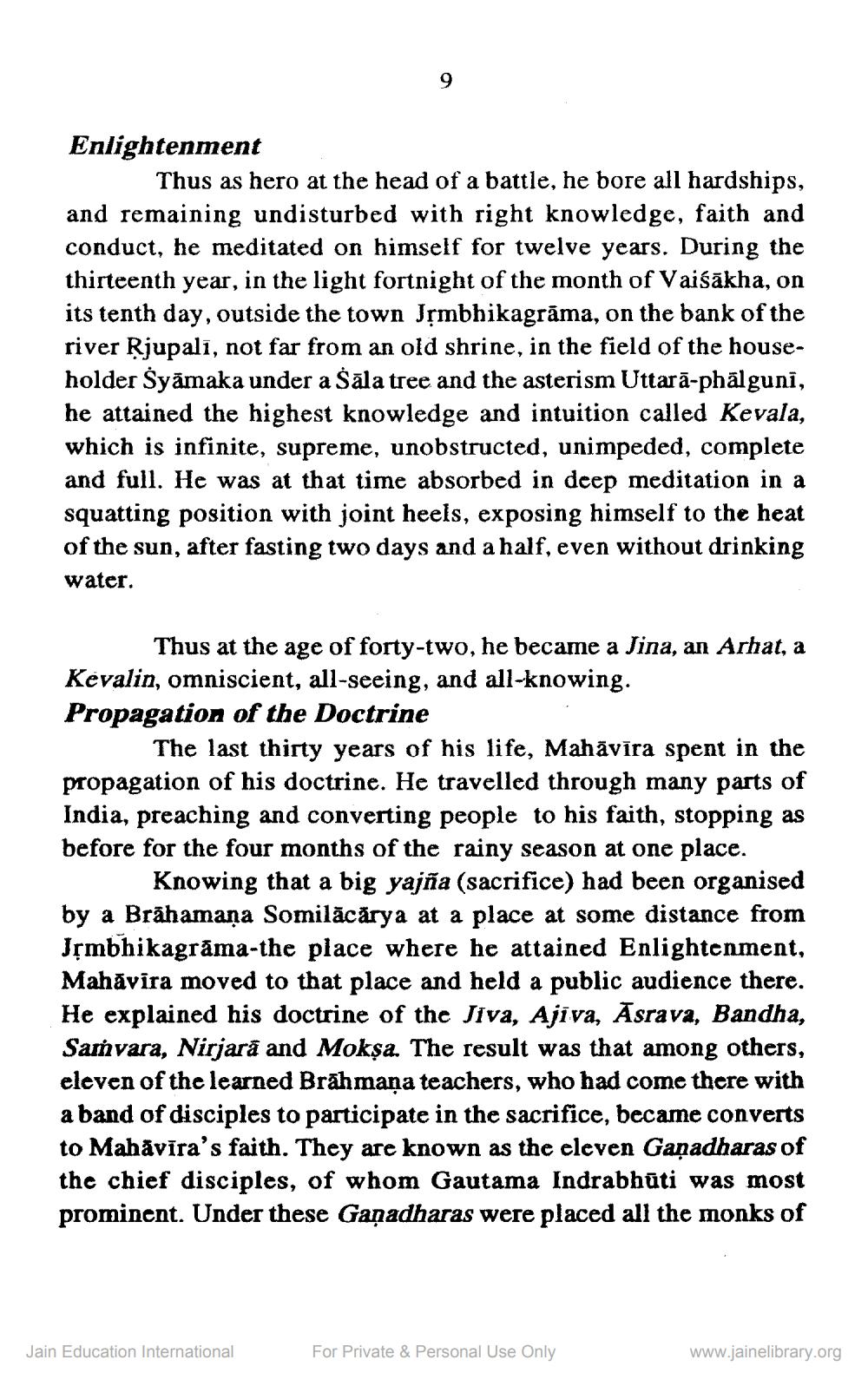________________
Enlightenment
Thus as hero at the head of a battle, he bore all hardships, and remaining undisturbed with right knowledge, faith and conduct, he meditated on himself for twelve years. During the thirteenth year, in the light fortnight of the month of Vaišākha, on its tenth day, outside the town Jşmbhikagrāma, on the bank of the river ķjupalī, not far from an old shrine, in the field of the householder Syāmaka under a Sāla tree and the asterism Uttarā-phālguni, he attained the highest knowledge and intuition called Kevala, which is infinite, supreme, unobstructed, unimpeded, complete and full. He was at that time absorbed in deep meditation in a squatting position with joint heels, exposing himself to the heat of the sun, after fasting two days and a half, even without drinking water.
Thus at the age of forty-two, he became a Jina, an Arhat, a Kevalin, omniscient, all-seeing, and all-knowing. Propagation of the Doctrine
The last thirty years of his life, Mahāvīra spent in the propagation of his doctrine. He travelled through many parts of India, preaching and converting people to his faith, stopping as before for the four months of the rainy season at one place.
Knowing that a big yajña (sacrifice) had been organised by a Brāhamana Somilācārya at a place at some distance from Jşmbhikagrāma-the place where he attained Enlightenment, Mahāvira moved to that place and held a public audience there. He explained his doctrine of the Jiva, Ajiva, Asrava, Bandha, Samvara, Nirjară and Mokşa. The result was that among others, eleven of the learned Brāhmaṇa teachers, who had come there with a band of disciples to participate in the sacrifice, became converts to Mahāvīra's faith. They are known as the eleven Gañadharas of the chief disciples, of whom Gautama Indrabhūti was most prominent. Under these Ganadharas were placed all the monks of
Jain Education International
For Private & Personal Use Only
www.jainelibrary.org




